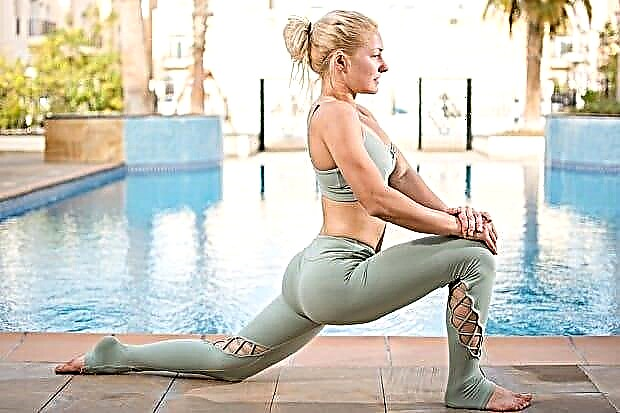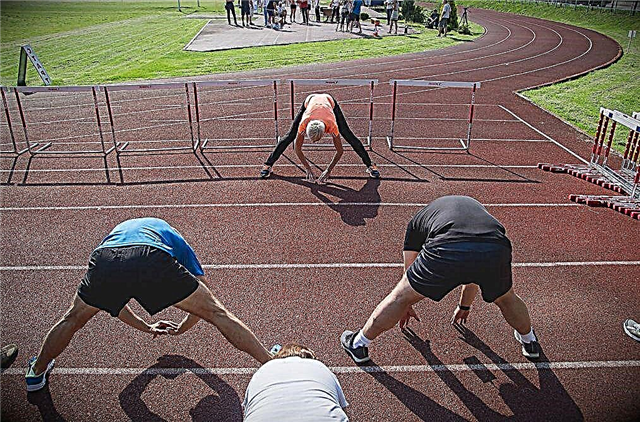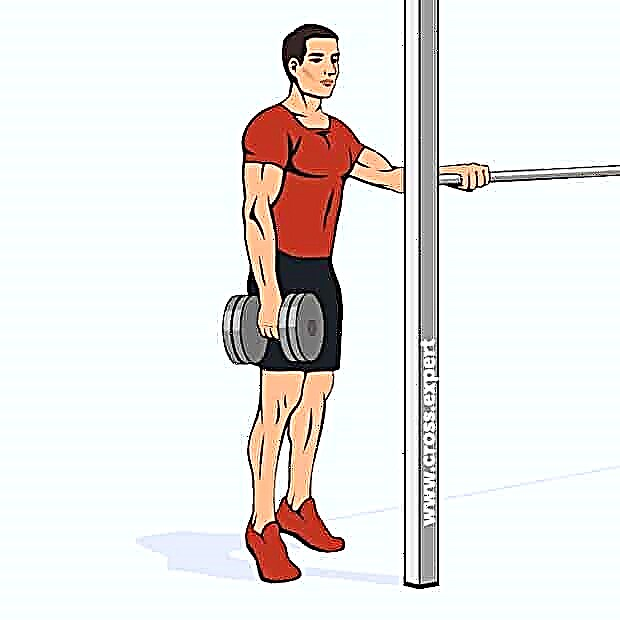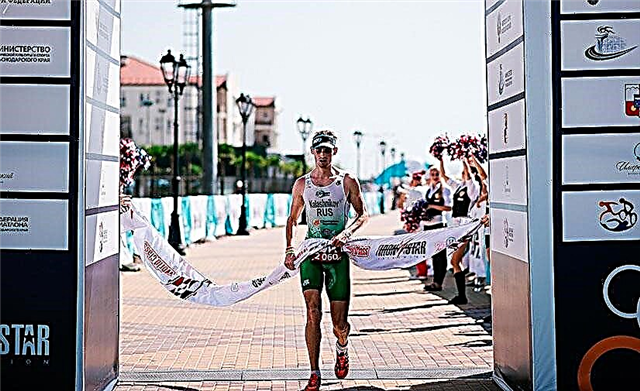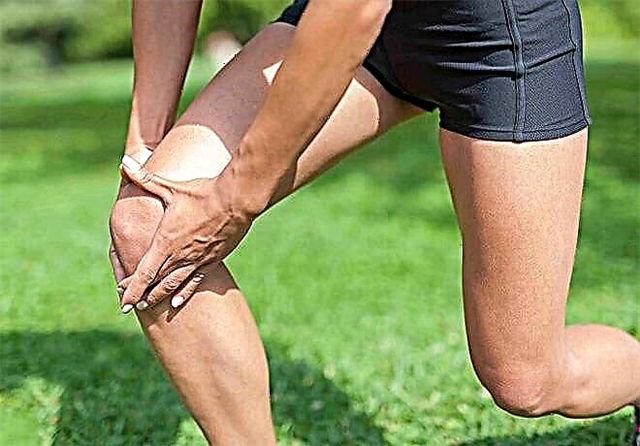No sport is as natural as running. Running has a positive effect on the development of the body and the cardiovascular system.

The information in this article will allow you to take a closer look at this easily accessible sport. It will be useful for beginner athletes to learn how to run correctly and avoid the most common mistakes.
Running physiology

Jogging is one of the main modes of movement, carried out with the help of coordinated activity of skeletal muscles and limbs. Its main difference from sports walking is the presence of a flight phase when both legs are torn off the surface. This moment significantly increases the shock load on the runner's feet and ligaments.
But at the same time, it allows you to increase the speed of movement. With constant exercise in the body, an active blood supply is established not only to muscles, but also to organs, including the brain. This, in turn, affects the tone of the body and the improvement of mental activity. However, the increased load on the body imposes a number of demands on people who want to go jogging.
Before embarking on a regular exercise, you need to check the readiness of the body for this kind of stress in terms of weight. If you are overweight, you will have to do exercises aimed at burning fat and strengthening muscles and ligaments. This will avoid injury initially.
It is also worth doing dietary nutrition to speed up the result. The basic rule here is to spend more calories than you are getting. Only then should you start jogging. For those who consider themselves healthy, you can go straight to the basics.
Correct running technique

Correct technique allows less fatigue, respectively, the result will be faster. There is a basic principle, maximum distance at minimum cost. From this it follows that there should be nothing superfluous in the movements, spending valuable energy.
- Running without bouncing. A strong vertical movement of the body leads to a waste of forces to damp the shock load. Movements should be smooth and directed horizontally.
- Run without side swing. This is achieved by placing the outer feet in one line. Compliance with this condition leads to an optimal stride length.
- Correct foot placement. This is individual. Depends on the skeleton. However, the soft positioning of the foot by rolling from heel to toe is the most common and is suitable for jogging.
- Step width. It should be such that it allows you to take three steps per second without undue effort.
- Straight body. The body is neither tilted nor twisted, the head is in one vertical line with the spine. This achieves a minimum of effort to maintain the body. Also, with this technique, it is easier to breathe deeply.
- Rhythmic breathing. The main thing in running is breathing. Two steps, inhale, two steps, exhale. You can breathe both through your nose and through your mouth. But breathing through your mouth is easier.
Running dynamics
Work and hand position while running

The dynamics starts with the hands. It is the hands as a system of levers that help in jogging. The arms should be bent at the elbows at 90 degrees, palms facing the body, fingers slightly clenched. In this position, it is easiest for the hands to move in an arc parallel to the body with a minimum of effort. You should not press your hands to your chest or vice versa, swing them unnecessarily. Since in such cases the body will twist, and this must be avoided, since there is excessive muscle work and this reduces the internal volume of the lungs, making it difficult to breathe easily and fully. Both of these factors lead to premature fatigue.
As for the body, it should be kept straight and upright. In this position, the minimum load is placed on the stepping foot. The shoulders help the arms work, but remember that twisting the torso while jogging is unacceptable. Also, with a straight position of the body and head, the spine and muscles of the body have less load.
Work and leg position while running

Now let's talk about the legs. In the phase of landing on the supporting leg, it should be left slightly bent at the knee. This will prevent harmful stress on the knee joint. If this does not happen, then the leg is thrown strongly forward and it is necessary to shorten the step.
Also, the control of the length of the step allows you to follow a simple rule - the supporting leg should touch the surface directly above the center of gravity. That is, under the body. Next, repulsion is carried out with the same leg when the other leg has already been moved forward.
All movements must be smooth and shock-free. Correct running is almost silent. If a person spanks his feet, it means that he is doing something wrong or he is already tired and need to take a break to rest.
Correct breathing while running

The main obstacle to continuing to run is lack of oxygen. Let's talk about breathing. In running endurance exercises, it plays a major role. During training, you should not talk, chew gum. Nothing should obstruct inhalation and exhalation. At the first steps it may seem unimportant, but during the distance these factors will make themselves felt.
There are many misconceptions about how to breathe properly, through the mouth or through the nose. All athletes breathe through their mouths. The exception is running in winter conditions, when inhalation is done through the mouth and exhalation through the nose.
When jogging at an average pace, the rule of equal inhalation and exhalation is optimal. Two steps inhale, two steps exhale. More trained runners work on the rule of three steps in, two out.
Warm up and cool down

At the beginning, you need to warm up. The essence of the warm-up is to warm up the muscles and ligaments, making them elastic and ready for stress. There is an increase in heart rate, increased breathing saturates the blood with oxygen. If you do not do this, then during the lesson there will be sensations of tight muscles. Fatigue will come faster.
After training, you may experience muscle soreness. If an increased load is given without a warm-up, for example, a fast sprint, then muscle spasm or sprains are possible. In other words, warming up prepares the body for stress, reducing the risk of injury.
Warm Up Exercise List:
- Circular head movement in both directions
- Circular rotation with hands in both directions
- Lateral bends, alternating with twisting of the body
- Squats, alternating with jumps to the top
After a thorough warm-up, you should catch your breath for 2-3 minutes and you can start training.
After jogging, you need to let the body know that the load is over. And smoothly proceed to stretching exercises. To gradually reduce the load on the heart muscle, you need to switch from running to a sports step within 3-5 minutes. After that, you can move on to stretching.
It is good to do it on sports grounds where there are ladders or wall bars. These exercises are essential for stretching the large leg muscles.
List of cool-down exercises:
- Deep forward lunges with support on the bent leg and swing for maximum amplitude.
- Bending the body forward on straightened legs to reach the feet with palms
- Bending the leg at the knee back with pulling it by the hand behind the foot, to stretch the quadriceps.
Proper nutrition when jogging

Training takes away from a person most of the energy stored by the body. In order not to feel a breakdown during a run, you need to pay attention to what you need to eat. Food intake should be no later than 60-40 minutes before jogging. It depends on the metabolism of a particular person. Complex carbohydrates are encouraged as they are absorbed the fastest.
It can be:
- Porridge
- Fruits and vegetables,
- Low fat yoghurt or kefir,
- Fruit juices, etc.
The main thing is that by the beginning of the workout, the stomach is not fully loaded, and instead of training, the athlete is puzzled by heartburn or heaviness in the stomach. During a run, you should refuse to eat. However, drinking is also not recommended.
If it is very hot outside and thirsty, then it would be more correct to postpone the run to a less hot time of the day. After exercise, you can replenish the fluid loss in your body. Depending on your personal schedule, you can start eating 20-30 minutes after your run.
Time and place of classes

There are no special restrictions for running. Each athlete adheres to his own daily routine and free time. Of course, it is worth considering a person's daily biorhythm. Running at midnight is not the best solution. Most people jog in the morning, after a light snack, but before taking their main breakfast.
If the schedule does not allow doing this, then training begins from 7 to 9 o'clock. After dinner and a little rest after work. Stadiums, jogging tracks, or parks can be very good places to practice. Since running through the city in a crowd of passers-by will not bring much pleasure.
How to run to avoid losing muscle mass

Many professional athletes who are engaged in muscle mass are afraid of losing the gained volume. Here it is worth remembering the basic rule of bodybuilding, consume more calories than you expend.
If you follow the diet for gaining muscle mass, then 15 minutes of jogging for cardio stimulation will not reduce muscles, but will warm up the body well, preparing it for stress. Of course, professional athletes in the pre-competition period do not need such advice and have developed specific training plans for themselves.
How to run properly to build your legs

To increase the volume of muscle muscles with the help of running, it is necessary to make changes in the training technique. The basic rule works, the volumes grow with the growth of the weight load. In this sense, running up a steep hill is useful. This activity is very well characterized by the feeling when the legs are already cottony, and there is still no shortness of breath.
The second recipe for building leg muscles with running is the ragged mode sprint. Jog 100 meters, sprint 100 meters. The rule of gradually increasing the load should be observed to prevent injury. If a person is interested in bodybuilding, then instead of jogging, you should use training with the help of simulators, since they are most effective in terms of gaining muscle mass.
How to run to improve your health

For a permanent positive effect from jogging, you need to constantly train. The very fact of jogging in the morning or after work should become a habit of the body. Over time, the duration and range will increase, and with them pleasant changes in figure, vitality and habits will occur. Perseverance and adherence to the rules and techniques during training, as well as proper nutrition, can bring the body to a better state throughout the year. In the winter, it is worth moving to gyms with exercise equipment and continuing to run there.
The correct approach to constant training will improve the physical condition of a person. The daily routine is normalized, the pressure will come to order. The excess weight will gradually disappear. All these changes will occur gradually. The main thing in the classes is constancy and perseverance, it is these qualities that help improve your condition every day throughout your life.




